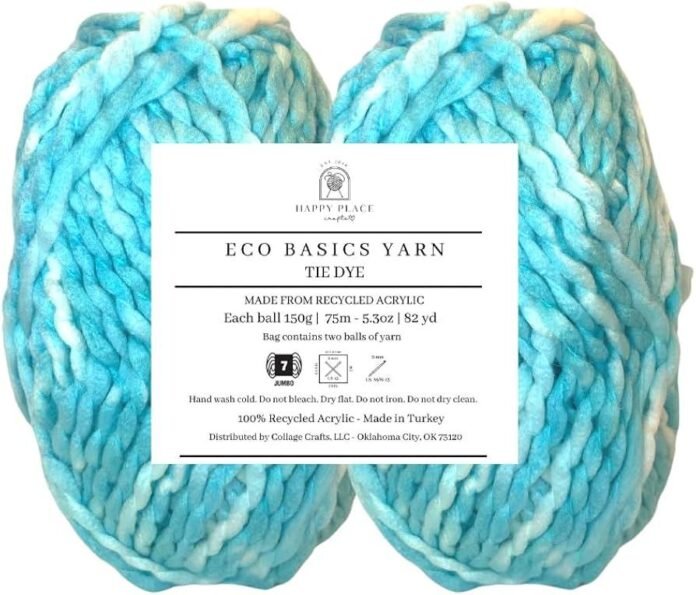Dyeing Your Own Yarn Naturally: A Journey into Color and Craft
In a world where handcrafted textiles are celebrated, the rhythmic motion of knitting and crocheting has woven itself into the fabric of our lives. But what if the colors that bring our creations to life could come from nature itself? The art of natural dyeing offers a vibrant palette sourced from the very earth beneath our feet, transforming ordinary yarn into remarkable fibers. In this article, we’ll explore the captivating process of dyeing your own yarn naturally, unlocking the secrets of plant-based colors, and empowering you to infuse your projects with the rich hues of the seasons. Whether you’re a seasoned fiber artist or a curious beginner, join us on this journey as we harness nature’s bounty to create stunning, handmade colors that reflect your unique style. Get ready to discover the beauty of natural dyes and the joy of crafting with intention.
Exploring Natural Dye Sources: Plants, Fruits, and Spices
Delving into the world of natural dyes opens up a vibrant palette found in the natural environment around us. from the leafy greens to the vibrant blooms and even the humble fruit peel, plants offer a plethora of options for dyeing your yarn. Consider these common sources for natural dye extraction:
- Indigo – The classic blue dye derived from the Indigofera plant.
- Yellow Onion Skins – Produces a warm golden hue.
- Avocado Pits and Skins – Yield beautiful shades of pink and peach.
- Turmeric – This spice gives a bright,cheerful yellow.
- Black Walnuts - Perfect for rich browns and deep tans.
Moreover, its fascinating how fruits and spices can impart unique colors to your yarn. For example, extracting dye from beets will give you stunning shades of magenta, while pomegranate peels can render a range of warm golden-yellow tones. To visualize the range of colors, here’s a simple reference table:
| Dye source | Color Achieved |
|---|---|
| Beets | Magenta |
| Pomegranate Peels | Golden Yellow |
| Spinach Leaves | Soft Green |
| Red Cabbage | Blue to Purple |
Preparing Your Yarn: techniques for Optimal Dye Absorption
To achieve the best results when dyeing yarn with natural materials, preparing your fibers is essential. Begin by washing your yarn thoroughly to remove any oils, dirt, or residues that may interfere with the dyeing process. Use a mild soap and lukewarm water, keeping the yarn submerged without agitating it too much. Allow the yarn to soak for about 30 minutes; this ensures that the fibers open up and are ready to absorb the dye.
After rinsing, it is beneficial to mordant your yarn to enhance dye uptake and color richness. Common mordants include alum, tannin, and iron, each offering different effects. Consider these options:
| Mordant | Effect on Color |
|---|---|
| Alum | Brightens colors |
| Tannin | Deepens and softens shades |
| Iron | Darkens colors, adds earthy tones |
Mordanting typically requires heating the yarn in a solution for about an hour before rinsing again. By implementing these preparatory steps, your yarn will be primed for optimal dye absorption, allowing the natural pigments to create stunning, vibrant hues that endure through time.
Step-by-Step Guide to the Dyeing Process
to begin your dyeing journey, gather your materials and set up a workspace where you can comfortably create. Ensure you have natural fiber yarn, such as wool, cotton, or silk, as synthetic fibers may not absorb the dye effectively. Next, collect your natural dye sources; these can be anything from fruits and vegetables to flowers and spices.Popular options include:
- Onions for a warm yellow
- Avocado pits for a soft pink
- Beets for a vibrant red
- Turmeric for a rich golden hue
once you’ve selected your dye materials, the process of extraction begins. Start by chopping the dye source into small pieces and simmering it in a pot of water for about an hour, allowing the color to infuse. After this, strain the liquid into another pot, and you’re ready to dye.Before introducing your yarn, make sure to pre-soak it in a mordant solution (such as alum or vinegar) for at least an hour; this helps the dye bond better to the fibers. Your dye pot should also contain enough water to completely submerge the yarn. Place the pre-soaked yarn into the dye bath, stirring gently for even color distribution, and allow it to simmer for 30-60 minutes depending on the desired intensity. Once finished, rinse the yarn under cool water until the runoff is clear, and hang it to dry.

Tips for Achieving vibrant and lasting Colors
To ensure your yarn emerges with rich, enduring hues, it’s crucial to select the right materials and methods. Natural fibers,such as wool,cotton,or silk,typically absorb dye more effectively than synthetic options. Additionally, preparing your yarn by soaking it in a mordant solution can greatly enhance color retention. Common mordants include alum and tannin, which not only help bind the dye to the fiber but also contribute to the final shade. Make sure to follow the mordanting instructions carefully for the best results.
When it comes to the dyeing process, immerse your yarn completely in the dye bath and keep it agitated. This ensures even coverage and prevents patchiness. The temperature of your dye bath also plays a crucial role; simmering the yarn gently can result in more vibrant colors. Experiment with timing as well, as leaving the yarn in the dye for longer can yield deeper tones. Here’s a quick reference table for common natural dyes and their potential color outcomes:
| Dye Source | Color Achieved |
|---|---|
| Avocado pits | Pale Pink to Soft Peach |
| Red Cabbage | Blue to Purple |
| Turmeric | Bright Yellow to Gold |
| Onion Skins | Warm Shades of Yellow and Orange |
Wrapping Up
As you embark on your journey into the vibrant world of natural dyeing, remember that the process is as enriching as the result. Each skein holds stories of the ingredients you’ve gathered, the techniques you’ve perfected, and the unique colors that emerge from nature’s palette.With practice and patience, you can unlock a spectrum of hues that reflect the beauty of the world around you.
Now that you have the knowledge and inspiration to dye your own yarn naturally, the next step is to dive in and experiment. Embrace the unpredictability and celebrate the happy accidents that may arise along the way. Whether you’re creating a cozy scarf, a vibrant blanket, or simply indulging in a passionate new hobby, your hand-dyed yarn will carry a piece of you—its creator.
So gather your materials, channel your inner artist, and let the leaves, flowers, and roots guide you. Dive into this world of color,and may every skein you dye bring warmth and joy to your crafting. Here’s to the endless possibilities of natural dyeing—may your yarn be as radiant and unique as your creative spirit!

